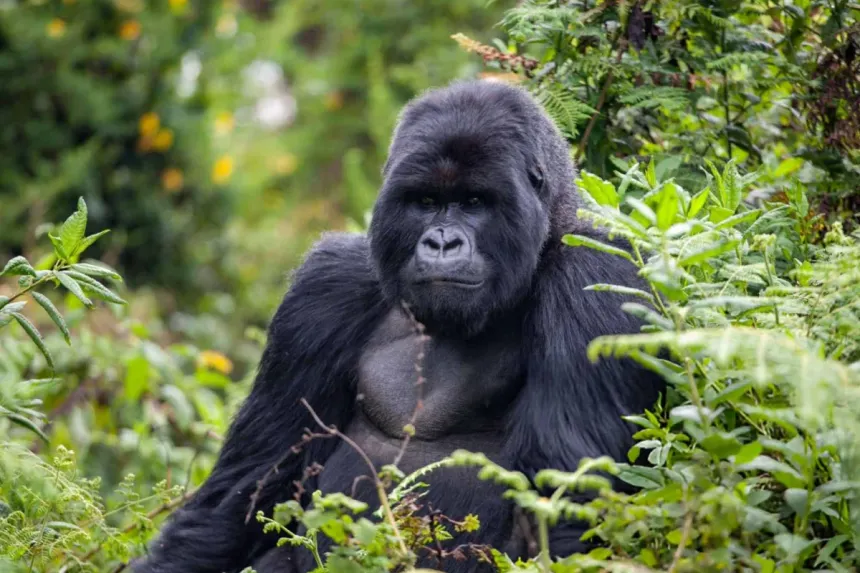🐾 All About Snow Leopards: Ghosts of the Mountains
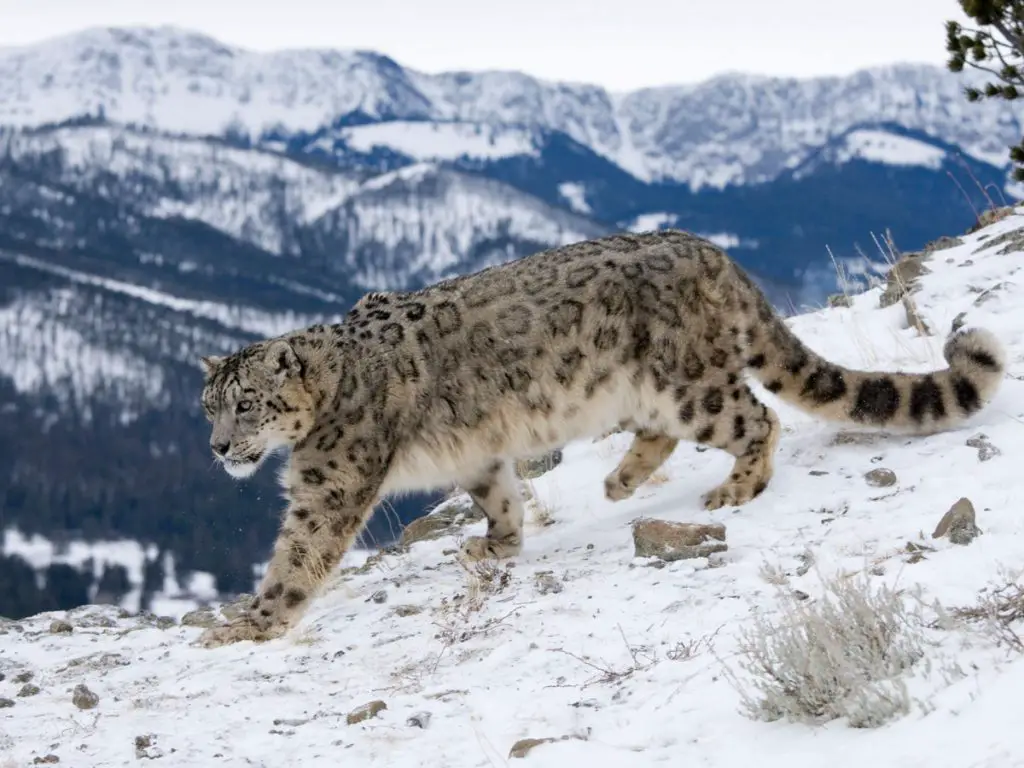
The snow leopard (Panthera uncia) is one of the world’s most mysterious and majestic big cats. Nicknamed the “Ghost of the Mountains,” this rare predator roams the high-altitude, snowy regions of Central and South Asia — and spotting one in the wild is a dream for many wildlife enthusiasts.
🐆 Basic Facts
- Scientific name: Panthera uncia
- Status: Vulnerable (IUCN Red List)
- Habitat: Mountain ranges of 12 countries, including Nepal, China, India, Mongolia, and Pakistan
- Weight: 27–55 kg (60–120 lbs)
- Length (with tail): Up to 7.5 feet (2.3 meters)
- Lifespan: 12–18 years in the wild; up to 25 years in captivity
🏔️ Where Do Snow Leopards Live?
Snow leopards live in cold, rugged mountains between 3,000 and 5,500 meters (9,800–18,000 feet) above sea level.
They prefer steep cliffs, rocky outcrops, and alpine meadows where they can stalk prey and remain hidden.
❄️ Physical Adaptations
These cats are perfectly built for cold, harsh environments:
- Thick fur: Densely covered in soft, woolly hair for insulation
- Spotted coat: Helps them blend into rocky terrain
- Long tail: Used for balance and as a scarf to wrap around the face during sleep
- Large nasal cavity: Warms air before it reaches the lungs
- Broad paws: Act like natural snowshoes to walk on snow
🐐 What Do Snow Leopards Eat?
They are carnivores and expert ambush predators. Their diet includes:
- Blue sheep (bharal)
- Himalayan tahr
- Ibex, marmots, hares, and birds
- Occasionally, they prey on domestic livestock, which causes conflict with local herders.
🐾 Solitary and Elusive
- Snow leopards are solitary, except during mating or when a mother raises cubs.
- They are mostly active at dawn and dusk (crepuscular).
- Known for their incredible leaping ability, they can leap up to 50 feet (15 meters) in one bound!
👶 Snow Leopard Cubs
- Mating season: January–March
- Cubs born: Around June after a 3-month gestation
- Litter size: 1–3 cubs
- Cubs stay with their mother for up to 2 years, learning to hunt and survive.
📉 Why Are Snow Leopards Endangered?
Threats include:
- Poaching for fur and bones
- Loss of prey due to overgrazing
- Habitat loss from development
- Retaliatory killings by herders
🛡️ Conservation Efforts
Organizations like WWF, Snow Leopard Trust, and local communities work to protect them through:
- Anti-poaching patrols
- Compensation for livestock loss
- Camera trap monitoring
- Community education programs
🌍 Fun Facts
- Snow leopards can’t roar, unlike most other big cats.
- They are sometimes called “ounce” (from an old French word).
- Their territory can span over 1,000 square kilometers.
- Nepal is one of the key countries in global snow leopard conservation.
💬 In Summary:
Snow leopards are beautiful, powerful, and vulnerable predators that symbolize the fragile balance of high mountain ecosystems. Protecting them also means protecting entire mountain habitats and the people who live there.
🐾 All About Snow Leopards: Ghosts of the Mountains
The snow leopard (Panthera uncia) is one of the world’s most mysterious and majestic big cats. Nicknamed the “Ghost of the Mountains,” this rare predator roams the high-altitude, snowy regions of Central and South Asia — and spotting one in the wild is a dream for many wildlife enthusiasts.
🐆 Basic Facts
- Scientific name: Panthera uncia
- Status: Vulnerable (IUCN Red List)
- Habitat: Mountain ranges of 12 countries, including Nepal, China, India, Mongolia, and Pakistan
- Weight: 27–55 kg (60–120 lbs)
- Length (with tail): Up to 7.5 feet (2.3 meters)
- Lifespan: 12–18 years in the wild; up to 25 years in captivity
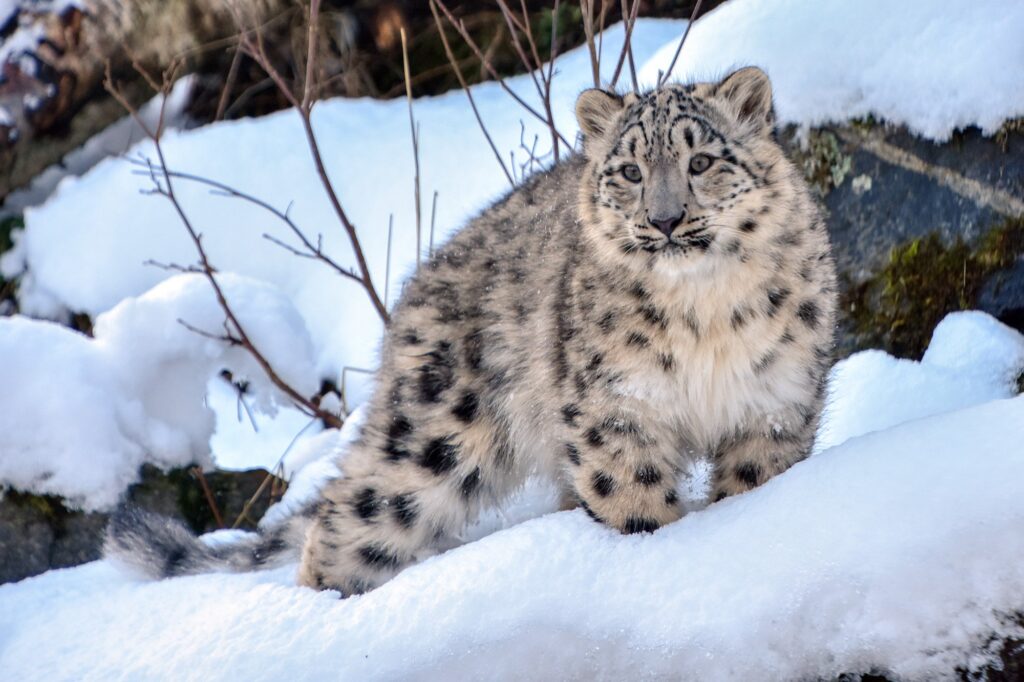
🏔️ Where Do Snow Leopards Live?
Snow leopards live in cold, rugged mountains between 3,000 and 5,500 meters (9,800–18,000 feet) above sea level.
They prefer steep cliffs, rocky outcrops, and alpine meadows where they can stalk prey and remain hidden.
❄️ Physical Adaptations
These cats are perfectly built for cold, harsh environments:
- Thick fur: Densely covered in soft, woolly hair for insulation
- Spotted coat: Helps them blend into rocky terrain
- Long tail: Used for balance and as a scarf to wrap around the face during sleep
- Large nasal cavity: Warms air before it reaches the lungs
- Broad paws: Act like natural snowshoes to walk on snow
🐐 What Do Snow Leopards Eat?
They are carnivores and expert ambush predators. Their diet includes:
- Blue sheep (bharal)
- Himalayan tahr
- Ibex, marmots, hares, and birds
- Occasionally, they prey on domestic livestock, which causes conflict with local herders.
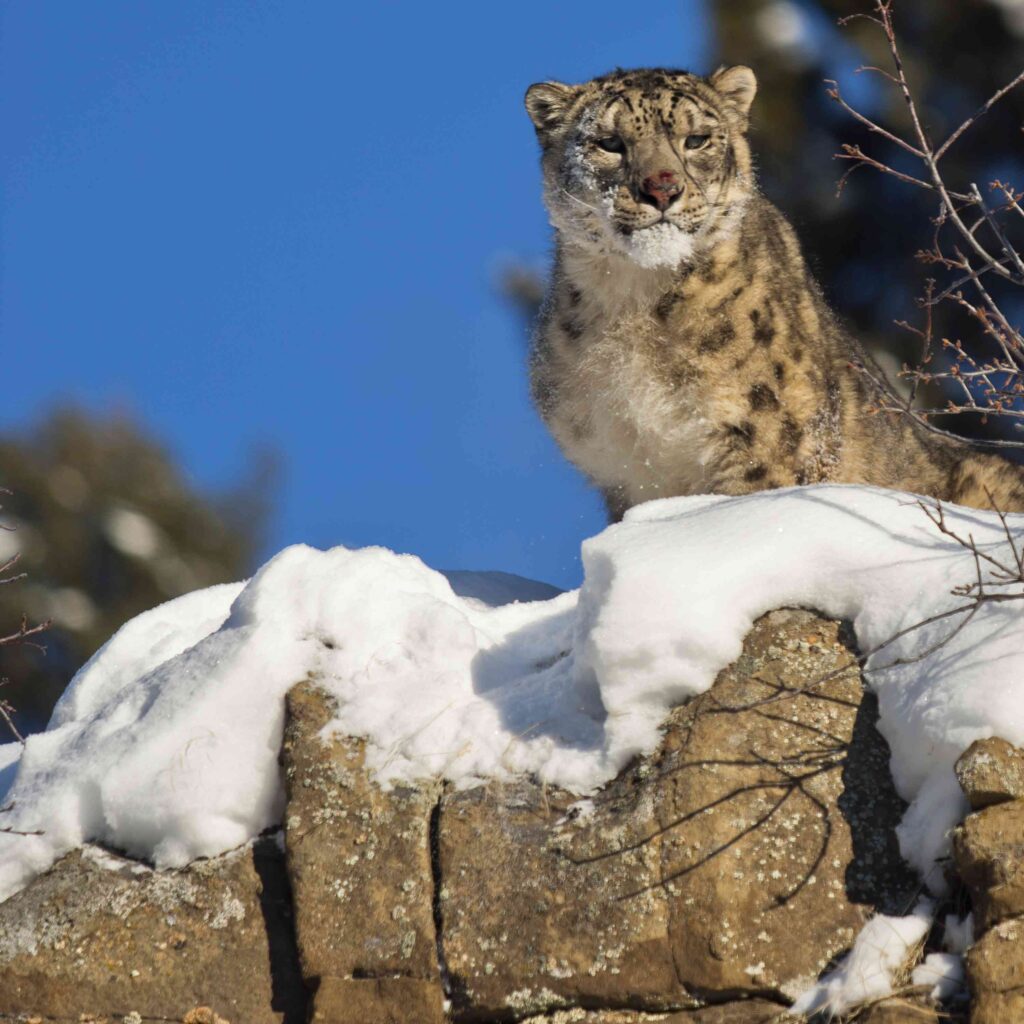
🐾 Solitary and Elusive
- Snow leopards are solitary, except during mating or when a mother raises cubs.
- They are mostly active at dawn and dusk (crepuscular).
- Known for their incredible leaping ability, they can leap up to 50 feet (15 meters) in one bound!
👶 Snow Leopard Cubs
- Mating season: January–March
- Cubs born: Around June after a 3-month gestation
- Litter size: 1–3 cubs
- Cubs stay with their mother for up to 2 years, learning to hunt and survive.
📉 Why Are Snow Leopards Endangered?
Threats include:
- Poaching for fur and bones
- Loss of prey due to overgrazing
- Habitat loss from development
- Retaliatory killings by herders
🛡️ Conservation Efforts
Organizations like WWF, Snow Leopard Trust, and local communities work to protect them through:
- Anti-poaching patrols
- Compensation for livestock loss
- Camera trap monitoring
- Community education programs
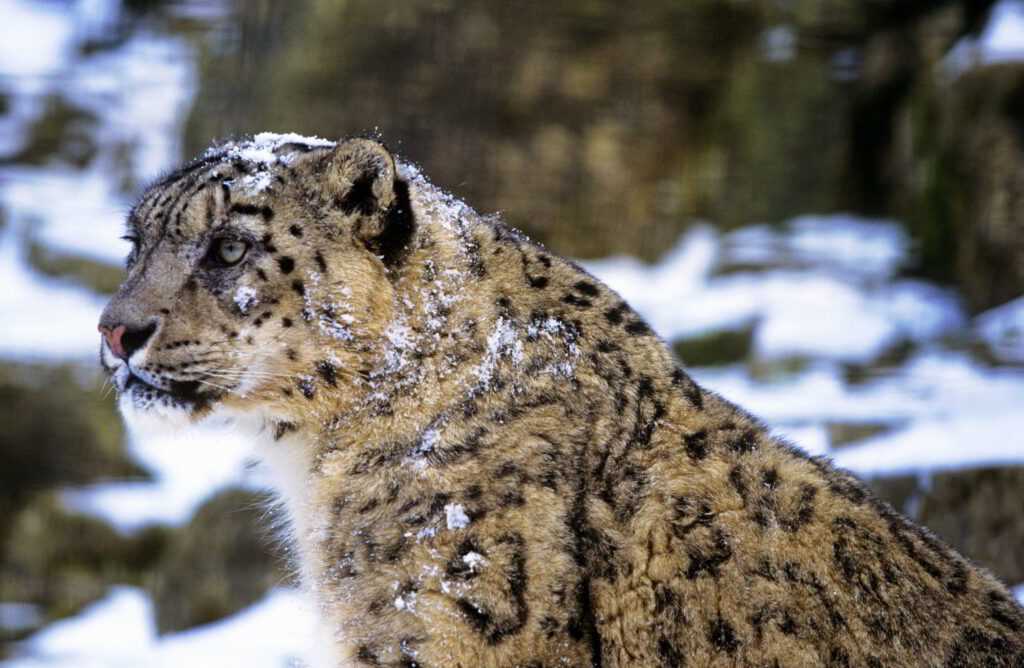
🌍 Fun Facts
- Snow leopards can’t roar, unlike most other big cats.
- They are sometimes called “ounce” (from an old French word).
- Their territory can span over 1,000 square kilometers.
- Nepal is one of the key countries in global snow leopard conservation.
💬 In Summary:
Snow leopards are beautiful, powerful, and vulnerable predators that symbolize the fragile balance of high mountain ecosystems. Protecting them also means protecting entire mountain habitats and the people who live there.



